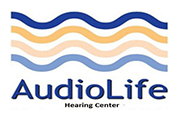
It seems as if all our devices are getting stronger, smarter, and smaller. Generally speaking, the trend is that devices do more and take up less space.
This is also true for hearing aids, and it’s not surprising. Though hearing issues have a number of causes, hearing difficulties are more common among older people, and the world’s population is aging. About 37.5 million adults and 3 million Canadians report some level of hearing loss according to the National Institutes of Health. And that number is rising since age is the strongest demographic variable to predict hearing loss.
If you’re dealing with hearing loss, that’s one person too many. Are there any better ways to deal with hearing impairment? Bring ‘em on! Here are some of the advancements that are happening.
Using Your Hearing Aid to Track Your Entire Body
This is so obvious, it’s one of those “Now why didn’t I think of that” innovations. Devices that provide different kinds of health tracking are almost always worn and need to be worn on the body. So, if you’ve already got a device that’s in your ear… do you actually need another one on your wrist? The answer is no. If you have the latest hearing aid, it can most likely track your pulse, physical activity along with fixing hearing problems such as tinnitus. Hearing aids also have the ability to monitor things that other wearables normally don’t, like the duration of conversations. How much social involvement you get can actually be an essential health metric, especially as you get older.
Better Streaming Straight to You
Connectivity is the major watchword, as virtual assistants like Siri and Alexa have moved from smartphones to in-home devices seamlessly. Audio from a device, such as a smart TV can now be streamed directly to your hearing aid if it is Bluetooth compatible. Google published open-source specifications for Android developers that show them how to use specific channels within Bluetooth to produce uninterrupted audio directly to hearing aids. This kind of technology is helping hearing aids work almost like super-powered wireless headphones, making it easier to enjoy music, movies, and more.
Big Data Allows Smart Adjustments
Your next hearing aid might make individualized recommendations much like how a Fitbit informs you of fitness objectives or how Netflix recommends your next movie based on your viewing trend. Several manufacturers are working on hearing aids that will learn both from the adjustments you make and from listening to the places you go. Some push it even further, crowdsourcing data on how individuals use their hearing aids anonymizing and then aggregating the data. So whether you’re watching TV at home, or in an IMAX theater, your hearing aids will be able to use this information to identify what your situation is and make adjustments to provide you with the most enjoyable audio experience.
Finally Ditching The Batteries
Ya, it sounds too good to be true, hearing aids that don’t require batteries? After all, making certain you’ve got spare batteries with you, or even making time to recharge your hearing aid batteries, can be a pain in the, um, ear. While we’re not likely to get hearing aids that don’t need any batteries, there has been a consistent advancement in rechargeable technology. That means longer in-use time, faster recharging, and less worrying about batteries, overall, not too shabby.
